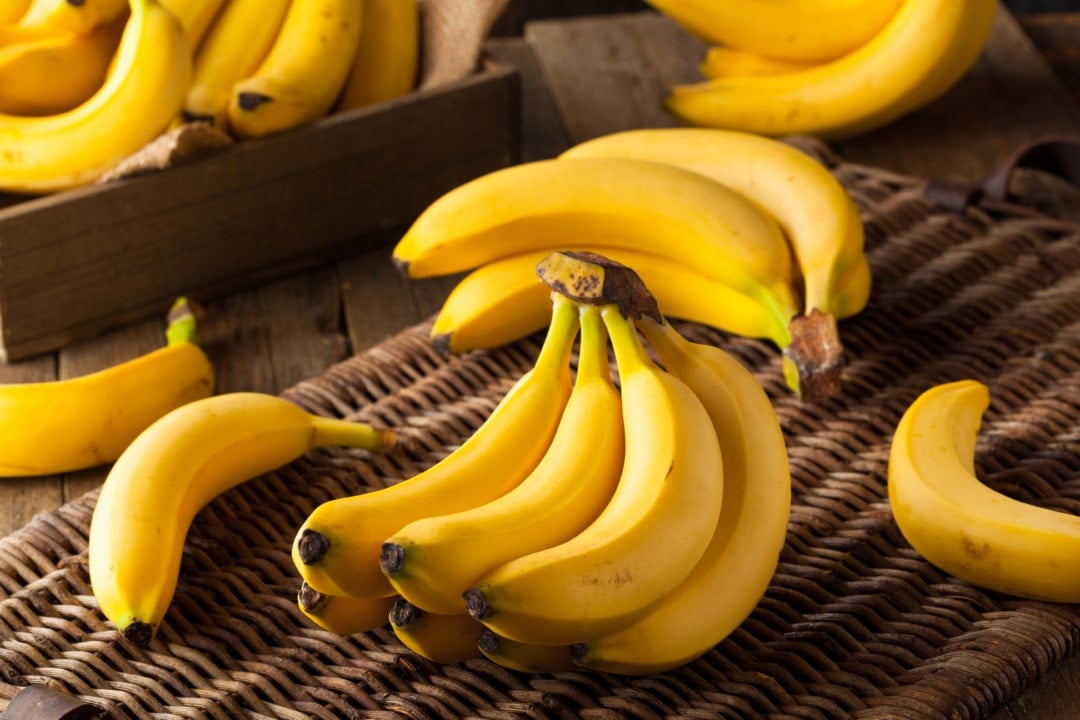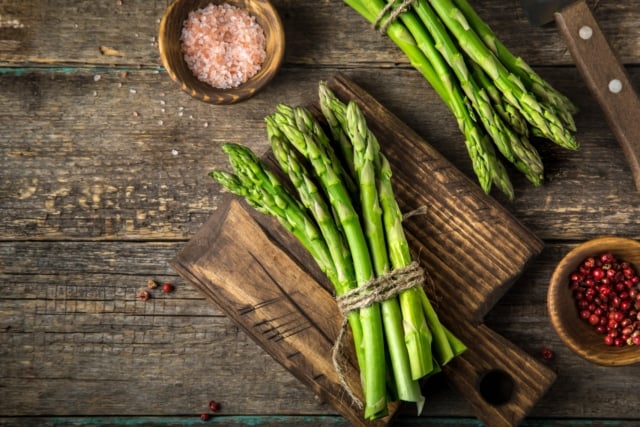7 Health Benefits of Rice + 5 Interesting Facts

Rice has been a staple food in many areas worldwide for thousands of years. Not only is it easy to grow, but the grains are incredibly nutritious. Here, we’ll walk you through everything you need to know about rice benefits. We’ll also get into a couple of recipes.
More than 3.5 billion people across the globe depend on rice to ensure they eat a balanced diet. That includes areas like Asia, Latin America, and parts of Africa.
The ingredient can provide us with all sorts of vitamins and minerals that are crucial for healthy development. Plus, rice can be exceptionally delicious with the right herbs and spices. So, we’ll cover the health benefits of rice and show you a couple of exciting recipes.
Interesting Facts about Rice

Interesting Facts about Rice
At first glance, rice doesn’t look all that special. The grains resemble tiny white pebbles.
Because of that, most people just think of rice as a cooking ingredient with a permanent spot in their pantries. Yet, the grain is so much more than that.
Rice has been around for thousands of years. During that time, it’s become one of the most popular ingredients of all time.
In fact, it provides more than ⅕ of the calories consumed worldwide by humans. As you can tell, that means we rely heavily on the grain.
That’s because rice is an excellent source of energy. It can fuel you for a long day’s work. Besides that, the grain is usually easy to grow. Although, that’s not where the advantages of rice end. The ingredient has countless other benefits.
However, before we jump into the advantages of rice, let’s take a look at a few interesting facts about the grain.
Origin of Rice

Origin of Rice
Many cultures have evidence of early rice cultivation. Because of that, it’s almost impossible to pinpoint the first instance of planting rice as a food source. Although, there are a few theories.
For starters, many people believe that rice cultivation dates back 13,500 to 8,200 years ago. Back then, locals of the Yangtze River basin in China began growing Oryza sativa rice.
The citizens quickly realized how nutritious the ingredients could be.
Not long after that, the grain spread all over Asia, and then to the whole world. But, it wasn’t until 1492 that rice made its way to the Americas. This happened during the Columbian Exchange. This is only one of many possible stories.
There are some people who believe that India started the rice craze. That’s because archaeologists discovered rice that dates back to 4,530 BC. They also found evidence of annual rice harvest ceremonies that occurred thousands of years ago.
Other than that, certain parts of Africa began cultivating rice independently, about 3,000 years ago. Yet, they grew a different type of grain. African locals focused their energy on cultivating Oryza glaberrima rice.
Today, more than 90 percent of the world’s rice supply comes from Asia, with China being the principal supplier.
Other than that, there are several countries that grow the crop. That includes India, Bangladesh, Pakistan, Japan, and Indonesia. Plus, a few other areas in Europe, North and South America, and Australia cultivate rice.
Gluten in Rice

Gluten in Rice
Gluten is a type of structural protein that’s present in certain cereal grains. We can find it in wheat, barley, and rye.
For the most part, the protein is harmless to humans. We can eat the component without any adverse effects.
Yet, some people can develop allergic reactions to gluten. Because of that, they stay away from wheat bread and other grains. However, not all grains contain the protein. For example, contrary to popular belief, rice is gluten-free.
Good to Know
In its natural form, rice doesn’t have any gluten. That includes white, brown, and wild rice. Even rice flour doesn’t contain the protein. For that reason, rice should be suitable for anyone on a gluten-free diet.
Rice Cultivation

Rice Cultivation
One of the most interesting facts about rice is how we cultivate it. Unlike other plants, the grain requires a large amount of water to thrive.
It grows in submerged land in coastal plains, river basins, or tidal deltas. Typically, rice will need a warm climate to flourish and ripen. That’s why it grows in tropical, semitropical, and temperate regions.
The process starts by sowing seeds in a garden bed. Then, after about 25 to 50 days, we can transplant the seeds into a rice paddy. This is a large field that’s enclosed and submerged under about two to four inches of water.
That’s where the rice will stay until it’s ready for harvest. The key to a successful rice crop is adequate irrigation and long periods of sunshine. These will ensure that the rice has all the nutrients it needs to grow.
Once the plants reach full maturity, we drain the paddy and harvest the grains. After that, we have to dry out the rice to stop the growth of bacteria and other organisms. This will help the grain last longer on our shelves.
Different Uses of Rice

Different Uses of Rice
Rice is an excellent source of carbohydrates. All you have to do is add a little hot water and the ingredient will make an incredibly nutritious meal.
That’s why many people around the globe rely on the grain as their primary food source. Yet, the ingredient has several other uses.
For starters, we can ground rice into flour. We use that to bake gluten-free bread and noodles or make several types of beverages. This includes amazake, horchata, rice milk, and rice wine.
Other than that, we can use rice in our beauty regimens. The grain has nourishing and moisturizing properties.
Because of that, many skin care products contain a small amount of the ingredient. That includes certain facial masks, hair treatments, and exfoliators. This is particularly true in Asian countries.
Moving on, rice has some hygroscopic properties. This means it can absorb moisture from its surroundings. That’s why people will recommend that you submerge your phone in rice if it gets wet.
The grain should be able to pull out the excess moisture from your device. We can also take advantage of this nature by placing rice in a salt shaker to keep it dry and stop it from caking.
Did You Know?
Finally, there are a few exotic uses of rice. A great example of that dates back to the Great Wall of China. During the construction, workers used a porridge made with sticky rice and calcium carbonate as a mortar.
The mixture holds the stones together and plays a major role in maintaining the durability of the wall.
White Rice Versus Brown Rice

White Rice Versus Brown Rice
Most people view white and brown rice as two distinct ingredients. Yet, that’s not quite true. In fact, they’re both one and the same.
All rice starts out as brown in its natural form when we harvest it. To get the white variety, the grain has to go through a few processing steps.
That includes milling that eliminates two, or three, layers of the grain. We remove the husk, bran, and sometimes the germ.
The bran contains the majority of the fiber content found in rice. As for the germ, it contains vitamins, minerals, and a small concentration of proteins and healthy fats. So, it’s no surprise that the white variety is slightly less nutritious.
Besides that, brown rice tends to have a richer flavor. It’s nuttier and denser. Because of that, cooking with this ingredient is a bit tougher than cooking white rice.
Nutritional Facts, Calories, and Sugar Amount of Rice

Nutritional Facts, Calories, and Sugar Amount of Rice
At this point, you may be wondering, why is rice so nutritious? Well, to help you understand that, we have to take a look at the composition of the grain.
In this section, we’ll dissect the nutritional value of rice and what role each component plays. Here’s a summary table to make your life easier.
| Components | White Rice (100 grams) | Brown Rice (100 grams) |
|---|---|---|
| Water Content | 12.89 g | 11.8 g |
| Calories | 130 kcal | 111 kcal |
| Total Fat | 0.3 g | 0.9 g |
| Total Carbohydrates | 28 g | 23 g |
| Dietary Fiber | 0.4 g | 1.8 g |
| Protein | 2.7 g | 2.6 g |
| Calcium | 10 mg | 10 mg |
| Sodium | 1 mg | 5 mg |
| Sugar | 0.1 g | 0.4 g |
| Iron | 0.2 mg | 0.4 mg |
| Potassium | 35 mg | 43 mg |
As you can tell, the most abundant component of rice is carbohydrates. We can break these carbs into simple sugars that we then convert to energy. For that reason, the grain is an excellent source of fuel.
Besides that, rice, both white and brown, contains trace amounts of calcium. Because of that, the grain can contribute to growing healthy bones. Plus, it’ll help with skin and nail health.
Finally, the ingredient contains a fair bit of potassium. This mineral reinforces your nerves and can improve the function of your heart muscle. On top of that, it can help move nutrients and wastes around your body.
Types of Rice and Their Health Benefits

Types of Rice and Their Health Benefits
There are over 40,000 rice cultivars of several types. That includes Oryza sativa rice along with hundreds of hybrids. Each variety has its own set of advantages. In this section, we’ll cover the different types of rice and how they can be beneficial.
Benefits of Red Yeast Rice

Benefits of Red Yeast Rice
Red yeast rice is one of the more exotic varieties on our list. Even though it’s incredibly popular in China and other parts of Asia, most people aren’t aware of this variety. It starts out as simple, white rice.
Then, we ferment the grain with a type of yeast (fungi) called Monascus purpureus. After a few weeks, the rice turns a red-purple shade that’s quite unique.
However, the appearance of the grain isn’t the only thing that changes.
The fermentation process gives red yeast rice a few special properties. For starters, it’ll increase the concentration of monacolin K.
This is a chemical that can lower blood cholesterol, blood glucose levels, and blood pressure. Because of that, we can grind the rice and take the powder as an oral supplement.
Other than that, red yeast rice can reduce inflammation and reduce cancer cell growth.
Black Rice Benefits

Black Rice Benefits
When you hear black rice, you immediately think that some form of food coloring was involved. Yet, that’s not the case.
Black rice is a type of grain that belongs to the Oryza sativa L. species. This variety grows naturally and has a signature black-purple hue.
The shade is a result of a pigment called anthocyanin. Although, this chemical will do a lot more than change the color of your rice. Anthocyanin is a flavonoid that naturally occurs in plants and has potent antioxidant properties.
These are compounds that can protect your cells from oxidative stress. This should decrease your chances of developing chronic conditions like heart disease and certain forms of cancer.
Besides that, black rice can help boost your eye health. That’s because it contains lutein and zeaxanthin. Lastly, other names for this variety include forbidden rice and purple rice.
Benefits of Brown Rice

Benefits of Brown Rice
As we mentioned, brown rice is an unprocessed grain that comes with a husk, bran, and germ. These layers can provide all sorts of nutrients that we rely on.
For example, the bran contains dietary fiber that can increase the weight and size of your stool. This will cause it to soften, which should prevent issues like constipation and diarrhea.
Moving on, the germ layer contains vitamins E and B. The former acts as an antioxidant and plays a major role in the anti-inflammatory process. Plus, it can boost your immunity system. As for vitamin B, it improves energy levels, brain function, and even eyesight.
Aside from that, brown rice has high levels of folic acid, potassium, and magnesium. These components can help with healthy cell function, blood pressure regulation, and the prevention of heart disease.
On top of that, brown rice can reduce the risk of obesity and hypertension.
White Rice Benefits

White Rice Benefits
Most of us consider white rice to be the unhealthiest variety of the grain. While that may be true, white rice can still be incredibly beneficial.
For starters, it comes with a healthy dose of carbohydrates. That will make generating a lot of energy much easier.
Other than that, white rice shares many of its benefits with brown rice. That includes reducing the chances of developing diabetes and preventing hypertension.
Moving on, since we remove the bran and germ from white rice, it’ll be easier to digest. Your body will have a much simpler time breaking down this grain variety.
So, it’s gentle on your digestive system. That makes it the ideal base food for anyone with a sensitive stomach.
Rice Water Benefits

Rice Water Benefits
It’s customary to soak rice before you cook it. This will soften the grains and cut your cooking time down significantly. All you have to do is throw the rice in lukewarm water for 15 to 30 minutes. Then, you can cook the grains however you like.
Once the soaking step is complete, most people will throw out the rice water. Yet, that would be a huge mistake. That’s because the liquid can be exceptionally beneficial to your health.
Rice water absorbs some of the nutrients and minerals from rice grains. For that reason, it can do wonders for your body. For starters, it’ll boost your immunity system and make fighting infections much easier.
Other than that, since it mostly consists of water, the liquid can be incredibly hydrating. It’ll improve the condition of your skin, hair, and digestive system.
On top of that, there’s evidence that suggests rice water can help with menstruation cramps. It’ll soothe muscle contractions and relieve some of the pain.
Wild Rice and Its Benefits

Wild Rice and Its Benefits
Contrary to what the name suggests, wild rice isn’t true rice. Instead, it’s a species of grass that shares a lot of common traits with the starchy grain.
Both ingredients have a high concentration of carbohydrates, but the wild variety contains fewer calories. Because of that, many people like to use it as a healthier alternative to white rice.
Aside from that, wild rice is an excellent source of Alpha Lipoic Acid (ALA). It’s a naturally occurring compound that can boost your body’s ability to produce insulin.
Plus, it can reduce the symptoms of diabetic nerve damage. So, it’s the perfect dietary addition for anyone who suffers from type 2 diabetes.
Lastly, some studies show that consistently consuming wild rice can help with weight loss.
Common Benefits Across All Types of Rice

Common Benefits Across All Types of Rice
While each variety of rice has special benefits, there are a few advantages that are common across all types. First up, all rice varieties should be able to provide you with energy. That’s because of their carbohydrate content.
Other than that, rice isn’t particularly high in calories. So, you can incorporate it into your meals even if you’re on a diet. Plus, the grains can swell up to about three times their original size.
For that reason, rice can be quite filling. This will help you cut down on snacking, which should aid with weight loss.
Finally, all rice types are exceptionally versatile. There are countless ways to prepare the grains. That includes boiling, steaming, frying, and even baking. Because of that, everyone should find a version of the dish that they enjoy.
Potential Risks of Rice

Potential Risks of Rice
Even though rice is incredibly nutritious, it comes with a couple of side effects. In this section, we’ll dive into some of the disadvantages of eating rice.
Bacterial Infections

Bacterial Infections
We all know that soil contains all sorts of microorganisms. Most of the time, these tiny creatures are completely safe. Yet, there are a few bacteria species that can be harmful to humans. That includes Bacillus cereus.
Unfortunately, these microorganisms can release spores that attach to rice. That means they can transfer to us when we eat the grain. At this point, you may wonder, doesn’t cooking the rice eliminate the spores?
Sadly, that’s not the case. Bacillus cereus can survive high temperatures. So, if you leave cooked rice sitting at room temperature for a while, the spores will grow into bacteria.
This can lead to physical symptoms like nausea and diarrhea. That’s why it’s crucial that you eat rice as soon as you prepare it.
Arsenic Concerns

Arsenic Concerns
When we hear the word arsenic, alarm bells immediately ring in our heads. We recognize the chemical as a deadly toxin.
While that may be true, arsenic is present in soil, water, and the air around us in small amounts. Regrettably, rice can absorb the chemical.
That means the grain will contain some level of arsenic. This has the potential to increase the risk of chronic illnesses like cancer. Although, that doesn’t mean you should stop eating rice.
Thankfully, arsenic is only dangerous in high concentrations. So, eating a bowl of rice a day should be fine.
Can Dogs and Cats Eat Rice?

Can Dogs and Cats Eat Rice?
Rice is a perfectly good source of energy for your canines. In fact, many commercial dog foods use the grains as a main ingredient.
Plus, white rice is easy to digest, which makes it perfect for a puppy with an upset stomach.
Moving on, cats can digest small amounts of rice. Although, it’s not a good idea to feed them the grain regularly since it’s not an essential part of their diet.
Tips and Recipes for Rice

Tips and Recipes for Rice
Now that you’re aware of the benefits of rice, we can dive into a couple of recipes. Here are some of the best tips on how to make the rice and what kind of tools you should use.
How to Make Rice

How to Make Rice
There are many ways to prepare rice, but the most popular is boiling the grains. That’s because this method only involves a few steps and you can cook the rice in a flash.
Right off the bat, you should rinse one cup of rice. Then, place the grains in a large pot and add two cups of boiling water.
Next, cover the pot and allow the rice to simmer for 15 to 20 minutes. Finally, let the rice rest for about 10 minutes, then fluff it with a fork.
Use Rice Cookers for the Perfect Rice

Use Rice Cookers for the Perfect Rice
You don’t need a rice cooker to make the perfect bowl of rice, but it’ll make the process much easier. All you have to do is throw the rice into the cooker and cover the grains with water.
Then, switch on the device and wait for it to finish the cooking cycle. You can also add a bit of butter to the dish to give it a little more flavor.
- Tomato Juice. Health Benefits + Tips.
- Asparagus. Benefits for Your Health.
- Mango. Benefits and Side Effects.
- Onions. Health Benefits and Tips for Use.
- Spinach. Benefits and Exctiting Facts.
- Peanuts. Health Benefits & Tips and Hacks.
- Dark Chocolate. Health Benefits and Tips.





